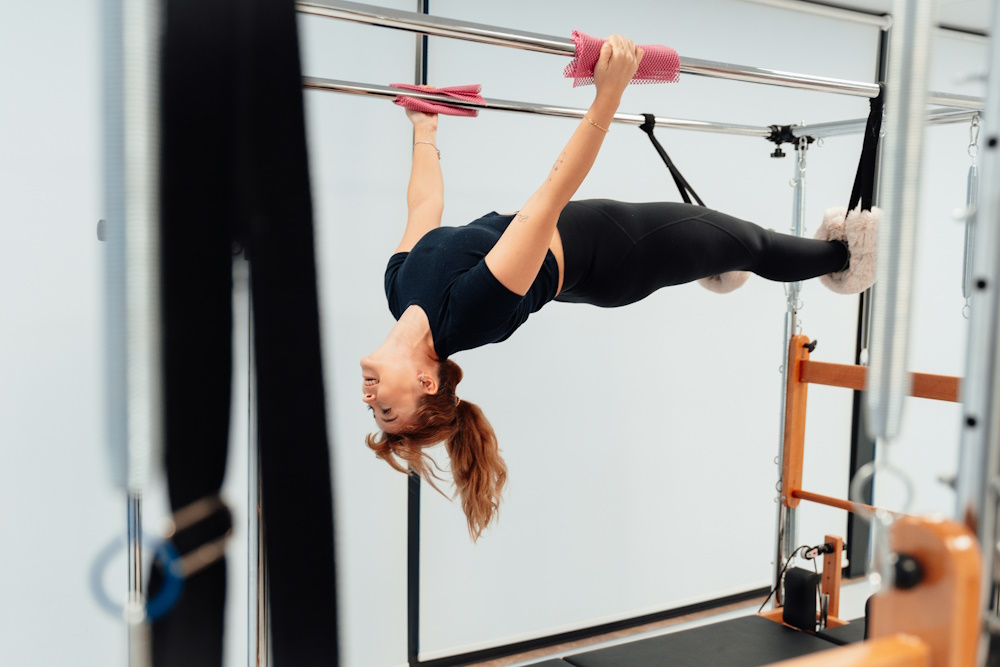Athletes, whether professional or recreational, are constantly seeking ways to improve their performance, prevent injuries, and enhance their overall fitness. In this guide, we’ll delve into the world of Pilates for athletes, exploring how this method can benefit individuals engaged in various sports and physical activities. We’ll address the fundamental question: Is Pilates good for athletes? Additionally, we’ll explore the best type of Pilates for athletes, compare Pilates to yoga, and discuss the frequency at which athletes should incorporate Pilates into their training routines.
Is Pilates Good for Athletes?
Absolutely. Pilates is an excellent fitness regimen for athletes of all levels, from weekend warriors to professional competitors. Here’s why:
1. Core Strength: Pilates focuses on building a strong and stable core, which is essential for athletes as it enhances performance, balance, and posture.
2. Muscle Balance: Pilates promotes balanced muscle development, preventing muscle imbalances that can lead to injuries and hinder athletic performance.
3. Flexibility: Athletes often require a wide range of motion. Pilates enhances flexibility, which is crucial for preventing muscle strains and optimizing movement.
4. Injury Prevention: Pilates emphasizes body awareness and proper alignment, reducing the risk of injuries often caused by poor form or overuse.
5. Functional Movement: The movements in Pilates are functional and translate well to athletic activities, helping athletes perform more efficiently.
6. Rehabilitation: For athletes recovering from injuries, Pilates can be used as a rehabilitation tool to rebuild strength and improve range of motion.
What Type of Pilates is Best for Athletes?
The type of Pilates best for athletes depends on individual goals and needs. Generally, a combination of mat-based and equipment-based Pilates can be most effective:
1. Mat-Based Pilates: Mat-based Pilates uses your body weight and minimal equipment. It’s excellent for developing core strength, flexibility, and balance. Athletes can benefit from mat Pilates, especially for core training.
2. Equipment-Based Pilates: This type involves specialized equipment like the reformer, Cadillac, and Wunda chair. Equipment-based Pilates provides resistance, allowing for a wider range of exercises. It’s particularly beneficial for strength training, muscle balance, and injury rehabilitation.
Athletes can tailor their Pilates routines to address their specific needs and goals. For example, a runner may focus on hip and leg strength using equipment-based Pilates, while a gymnast may emphasize balance and flexibility through mat-based Pilates.
Is Yoga or Pilates Better for Athletes?
Yoga and Pilates are both valuable practices for athletes, but they offer different benefits:
1. Yoga: Yoga is renowned for its focus on flexibility, balance, and mindfulness. It can help athletes improve flexibility, enhance mental focus, and promote relaxation. Many athletes incorporate yoga into their training to prevent injuries and recover from intense workouts.
2. Pilates: Pilates, as mentioned earlier, emphasizes core strength, muscle balance, and functional movement. It is particularly beneficial for athletes seeking to develop a strong core, improve posture, and prevent injuries related to muscular imbalances.
The choice between yoga and Pilates ultimately depends on an athlete’s specific goals and the areas they want to target. Many athletes find that a combination of both practices offers a well-rounded approach to physical and mental fitness.
How Often Should Athletes Do Pilates?
The frequency of Pilates sessions for athletes can vary based on training schedules, individual goals, and the availability of Pilates classes or instructors. Here are some general guidelines:
1. Regular Incorporation: Athletes can benefit from incorporating Pilates into their training routines at least 2-3 times a week. Regularity is key to reaping the full benefits.
2. Off-Season Training: During the off-season or less intensive training periods, athletes can increase the frequency of Pilates sessions to focus on core strength, flexibility, and muscle balance.
3. Pre- and Post-Workout: Athletes can perform shorter Pilates sessions as warm-ups or cool-downs before and after workouts. These sessions can help with injury prevention and muscle recovery.
4. Injury Rehabilitation: For athletes recovering from injuries, Pilates can be done more frequently to aid in the rehabilitation process. In such cases, guidance from a qualified Pilates instructor or physical therapist is essential.
5. Individualized Approach: Athletes should customize their Pilates routines to address their specific sport and physical condition. Seeking guidance from a qualified Pilates instructor is highly recommended to create personalized training plans.
In summary, Pilates is highly beneficial for athletes, promoting core strength, muscle balance, flexibility, injury prevention, and functional movement. Athletes can choose between mat-based and equipment-based Pilates, depending on their specific goals. While both yoga and Pilates offer advantages, the choice between the two depends on individual needs. Athletes can benefit from incorporating Pilates into their training routines 2-3 times a week, adjusting the frequency based on their training schedule, goals, and availability. Whether you’re a professional athlete or a recreational sports enthusiast, Pilates can be a valuable addition to your training regimen.
